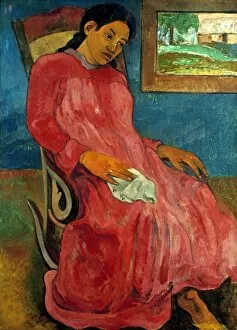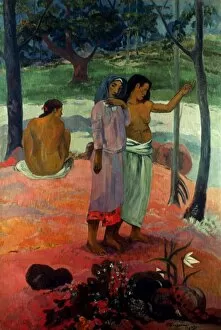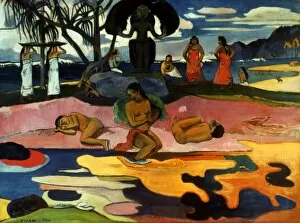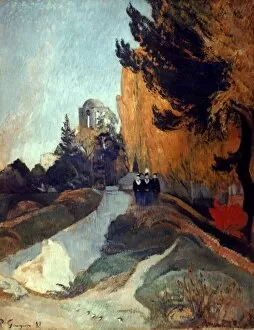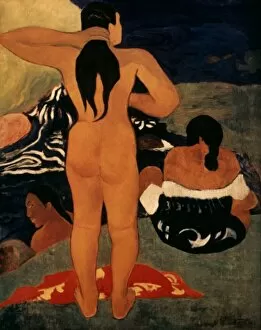Gauguin Collection (#11)
"Exploring the Exotic: Paul Gauguin's Captivating Artistic Journey" Paul Gauguin, a renowned French post-impressionist artist
For sale as Licensed Images
Choose your image, Select your licence and Download the media
"Exploring the Exotic: Paul Gauguin's Captivating Artistic Journey" Paul Gauguin, a renowned French post-impressionist artist, embarked on a captivating artistic journey that took him to various corners of the world. One of his notable works is "Gauguin: Tahiti Women, 1891, " also known as "Women of Tahiti" or "On the Beach. " This oil on canvas masterpiece showcases Gauguin's fascination with the vibrant culture and beauty of Tahitian women. In "Rupe Rupe (Fruit Gathering), 1899, " Gauguin captures the essence of Polynesian life through his depiction of locals gathering fruits amidst lush surroundings. The vivid colors and intricate details transport viewers to this idyllic tropical paradise. Another iconic piece by Gauguin is "Gauguin: Painting, 1897, " commonly referred to as "Where Do We Come From / What Are We / Where Are We Going. " This thought-provoking artwork delves into existential questions while showcasing Gauguin's mastery in using symbolism and storytelling through paint. "The Siesta, 1891" portrays a serene scene where two women rest under a tree in peaceful slumber. Through delicate brushstrokes and warm hues, Gauguin captures the tranquility and simplicity of everyday life in an exotic locale. Gauguin's travels extended beyond French Polynesia; he also explored Martinique. In his painting titled "Martinique Landscape, 1887, " he skillfully depicts the island's lush vegetation against a backdrop of vibrant blue skies—a testament to his ability to capture nature's beauty wherever he went. "The Queens Mill (1885)" reveals another facet of Gauguin's talent as he portrays Breton fishermen going about their daily lives with remarkable detail and authenticity. His attention to human subjects reflects his desire to depict ordinary people engaged in their work within their natural environment.


